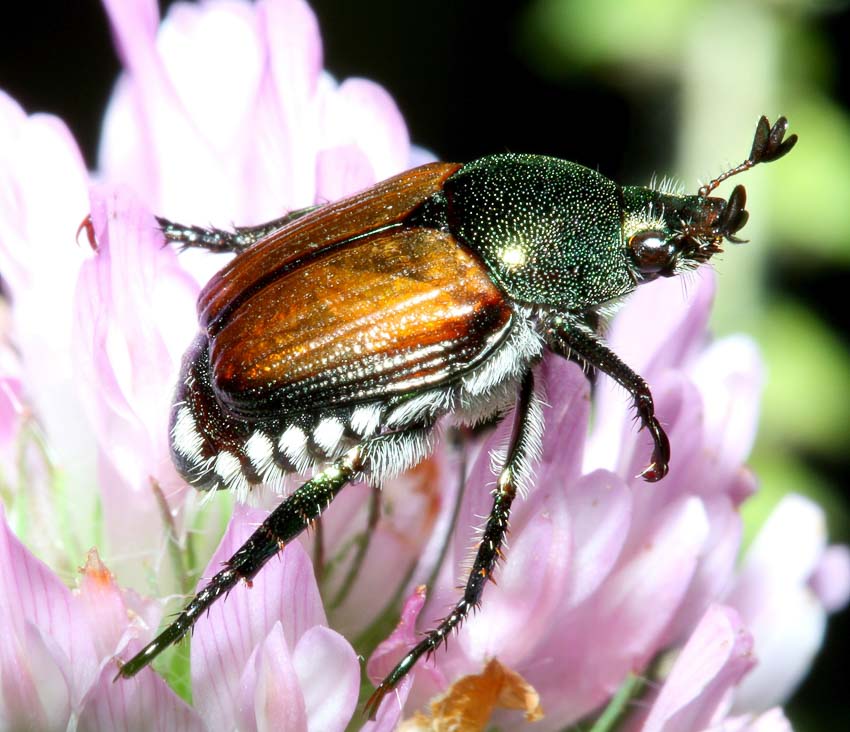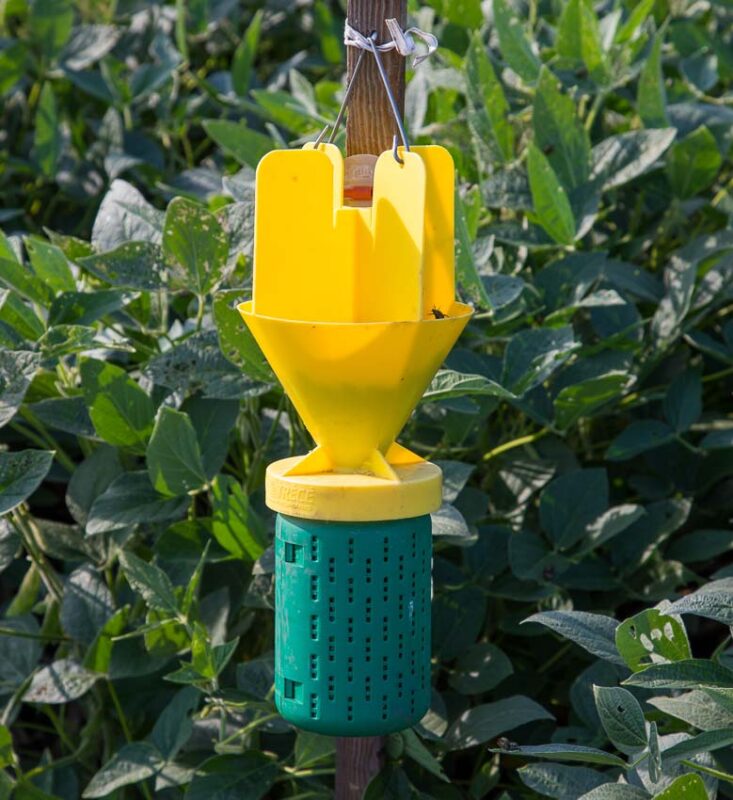Japanese beetles are an invasive species in the United States. They are highly destructive insects without natural predators, and they can be hard to get rid of. Learn how to prevent Japanese beetles with these effective strategies.
What are Japanese Beetles?
Japanese beetles (Popillia japonica) were an invasive species introduced to North America in the early 1900s. They are a species of scarab beetles, measuring about 0.6 inches long and 0.4 inches wide.
Japanese beetles have iridescent copper-colored forewings and a metallic green head and thorax, making them easily identifiable.
In Japan, these beetles have natural predators and aren’t a major insect pest. However, in Europe and the Eastern and Midwestern United States, Japanese beetles cause millions of dollars in damage yearly.
When choosing eradication and control methods, it helps to understand the lifecycles of these insects. What works on one stage of their life cycle won’t affect other stages, so it’s critical to have a treatment program that addresses the appropriate lifecycle stage.
Lifecycle of Japanese Beetles
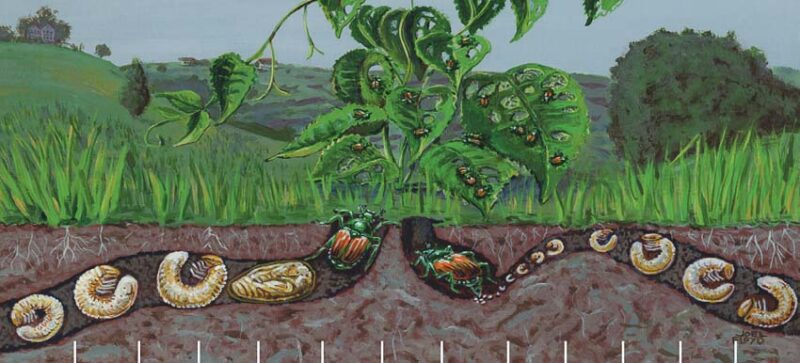
Various insects use different types of metamorphosis, with either three or four lifecycle stages. The Japanese beetle undergoes complete metamorphosis, with four stages: eggs, larvae, pupae, and adult.
Egg Stage
Ideally, you should try to prevent Japanese beetles before they lay their eggs.
Adult female Japanese beetles lay about 40 to 60 eggs during their lifecycle. They lay their eggs about two to four inches deep in the soil, where they find protection and can remain moist. The eggs are tiny, about 1 to 2 mm (1/32 to 1/16 inches).
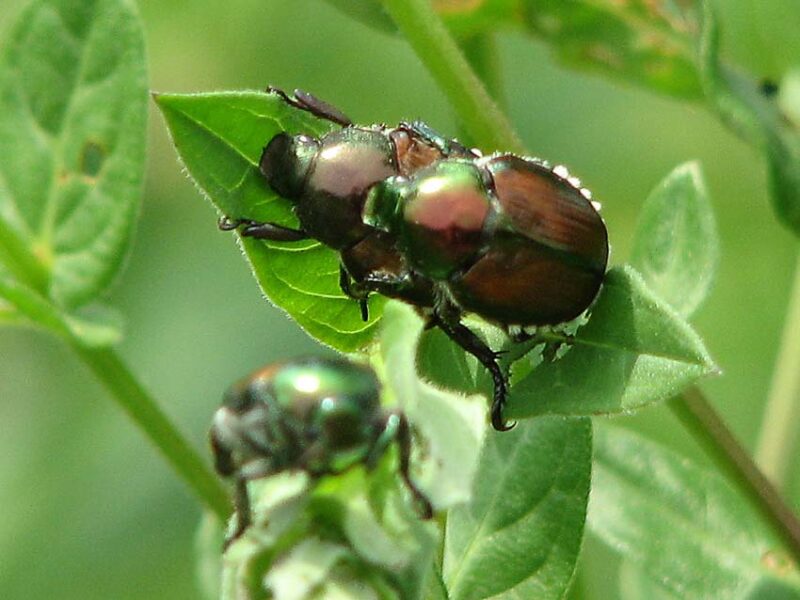
After mating, the female leaves the plant she has been feeding on to lay one to five eggs, which are white and oval. They prefer moist soil covered with vegetation because the roots will feed the larvae.
After depositing these eggs, she returns to the plant to resume feeding and will repeat the process several times. The eggs hatch about one to two weeks after she lays them.
Larval Stage
Once the eggs hatch, the tiny larvae start feeding on the roots of plants. Like many beetle grubs, Japanese beetles molt several times as they grow, going through five instar stages during this lifecycle stage.
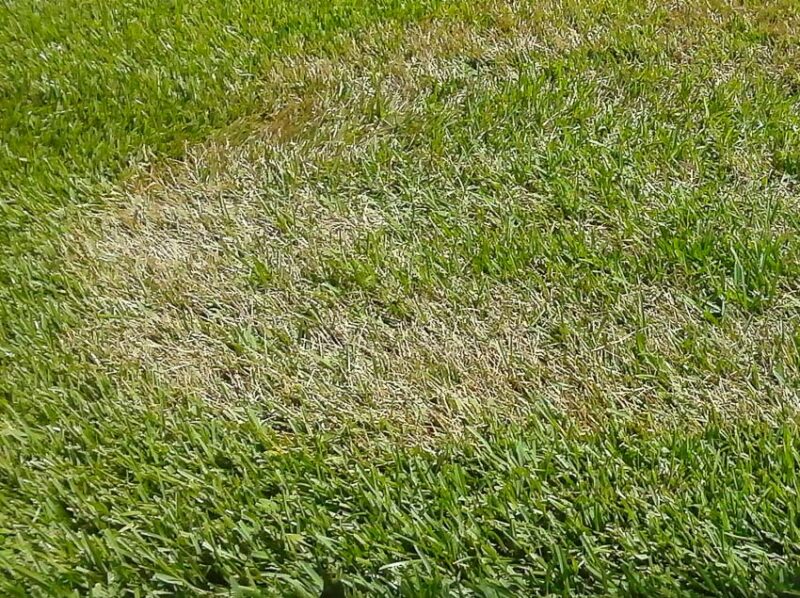
During the larval stage, Japanese beetles do considerable damage to lawns. As they grow, they become more mobile and will move to continue finding more and more roots to eat.
As the larvae chew through the roots of grass and crop plants, the plants above the soil turn brown and die. In soils heavily infested with grubs, you can easily pull the dead turf away from the soil because of the decimated roots.
Like many beetles, Japanese beetles spend most of their lives in the larval stage. For about ten months of their year-long lifecycle, they remain underground, feeding on the roots in the soil.
Once they reach the third instar, Japanese beetles overwinter underground. They burrow to about 4 to 6 inches deep. Then they move closer to the surface as the temperatures warm up in the spring.
Pupal Stage
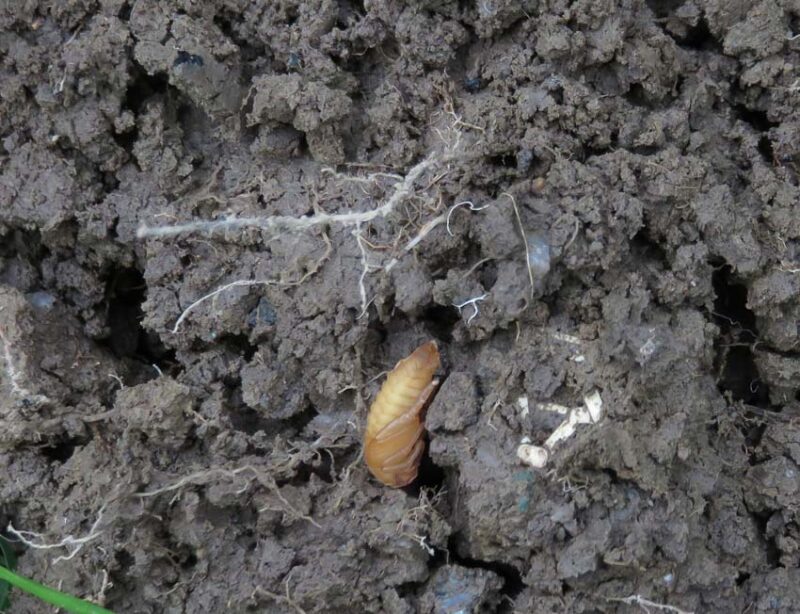
The pupal stage lasts about one to two weeks. After the grubs have reached their final instar stage, they pupate. In this stage, they are a light cream to reddish brown color and about ½ inch wide.
The pupal stage of the Japanese beetle is similar to the chrysalis stage of a moth or butterfly. During this time, they stop feeding and undergo a complete transformation, emerging as adults.
Adult Stage
Once the adult Japanese beetle finishes pupating and emerges from the ground, it releases pheromones that will attract other Japanese beetles.
The adults begin feeding on plant tissues and leaves—their heavy feeding results in the characteristic skeletonized leaves that are the hallmark of a Japanese beetle infestation.
Japanese beetles live about 30 to 45 days as adults, during which time they feed, mate, and lay eggs. The adults usually start to emerge in early June and continue hatching until late August.
The Harm Caused by Japanese Beetles
You should do everything you can to prevent Japanese beetles because they can destroy about 300 species of plants, including fruits, field crops, and ornamental shrubs. They prefer the foliage of blackberry brambles, lindens, blueberries, raspberries, and grapes. Roses are one of their favorite plants.
Plant Damage and Defoliation
The most significant damage caused by Japanese beetles is the defoliation of plant leaves. Some species of plants are more susceptible to Japanese beetles than others.
Japanese beetle adults also feed on corn, soybeans, asparagus, and other vegetable crops. The damage caused by this invasive species is easy to identify. Skeletonized leaves characterize it. As they chew through the soft tissues of plant leaves, they don’t eat the underside or thick veins.
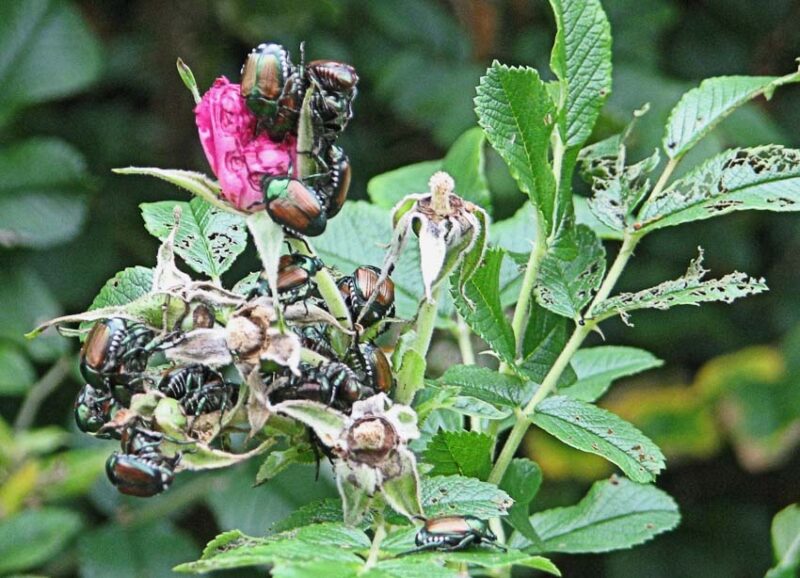
In the larval stage, Japanese beetles cause significant damage to turf in residential lawns, golf courses, and parks. While they will eat the roots of many types of plants, they prefer the roots of grasses. Indeed, they cause significant amounts of damage to lawns and athletic fields.
Secondary damage to turfgrasses is caused by animals hunting for grubs. Skunks, moles, crows, raccoons, and other animals dig up lawns, searching for nutritious grubs, causing even more damage to many types of lawn grass.
Attraction to Landscapes
Japanese beetles can sense their favorite host plants from hundreds of yards away. With some estimates saying that they can travel up to 10 or 15 miles from where they lived as grubs, there’s no way to eradicate them from your yard completely.
The plants that Japanese beetles like most will bring them into your yard, and once they are there, they will decimate many types of plants. Some people use fragrant plants like geraniums, which contain a substance that paralyzes the beetles, to trap Japanese beetles naturally.
Companion planting is one way to discourage adult Japanese beetles from coming into your yard in search of their favorite host plants. Strong-smelling herbs like garlic, rue, and catnip are popular choices.
You can also use flowers like marigolds and nasturtiums incorporated into your vegetable and flower beds.
Proven Methods for Preventing Japanese Beetle Infestations
There are several effective strategies for preventing Japanese beetle infestations. It definitely pays to be proactive to prevent large-scale damage, as these pests can cause major damage to your lawn and food crops in a short time.
Monitoring
Farmers will often use monitoring traps to determine if adult beetles are emerging from the ground, which will show whether there is a problem.
During June and July, you may suddenly notice the mating flights of adult beetles, which is another indication of an infestation.
If you notice adult beetle activity, you can also sample your soil to determine if you have Japanese beetle grubs. To determine if you have an infestation, dig a square-foot patch of soil and count the grubs. Anything over 10 grubs per square foot is considered an infestation.
Cultural Practices
Cultural controls involve horticultural practices where you remove plants that attract Japanese beetles. Some wild plants, such as wild grape vines, Virginia creeper, blueberries, and blackberry brambles, are highly attractive and should be removed.
Since Japanese beetles like to lay their eggs on soil covered with vegetation, such as a grassy lawn, it’s best to grow host plants like fruit trees in fields without grass. Cultivating the soil to prevent vegetation from growing between rows of apple trees, for example, is less likely to result in an infestation of Japanese beetles.
In your yard, plant rose bushes with ground covers that aren’t attractive to Japanese beetles. A shade ground cover like pachysandra is an excellent choice to plant around the bases of your rose bushes, as it will repel the adults and keep them from laying eggs in the soil.
Taking out your grass and switching to some type of grass lawn alternative is another way to deter Japanese beetles.
Handpicking
One of the best Japanese beetle prevention methods is handpicking. Adult beetles live for up to two months and do a lot of damage during that time, so it helps to kill them manually.
The best time of day to pick Japanese beetles is early in the morning. Use a bucket of soapy water and knock the beetles off your plants into the soapy water, where they will drown.
Natural Predators and Beneficial Insects
Using harsh chemicals to kill Japanese beetles will harm other insects and beneficial pollinators. Many species of pollinators are important to the global food supply, and their numbers are already declining from extensive pesticide use on food crops.
Hummingbirds eat Japanese beetles; attracting them to your yard by hanging feeders is another natural control. You can also try planting flowering trees and wildflower meadows to attract hummingbirds.
Attracting other birds that eat Japanese beetles, like catbirds, robins, cardinals, and grackles, is easy to do by providing food, water, and shelter. Set up a bird bath and feeder, and put up a few birdhouses on the edges of your property.
Traps and Barriers
There is a considerable amount of controversy about Japanese beetle traps. Some people swear by them, and others say they only attract beetles and worsen the problem. The truth is likely somewhere in between, depending on how they use them.
Japanese beetle traps use lures that attract adult beetles. They use pheromones or flower scents, and the beetles will come from miles away, getting caught in traps.
As a result, the traps will fill up quickly, but they still attract beetles. Once the beetles are in your yard, they will eat your plants if the traps are full.
The trick is to use large traps and keep them emptied regularly. When you empty the traps, dump them into a bucket of soapy water to ensure all the beetles are dead.
Insecticides
There are several natural insecticides that you can use to control Japanese beetles, including products that contain neem oil or pyrethrin.
It’s best to avoid using chemical insecticides. However, if you have a severe infestation, you may need to use a product like Dominion 2L, a neonicotinoid insecticide that kills the adults on contact. It will also kill larvae that come in contact with it in the soil.
FAQ: Common Questions About How to Prevent Japanese Beetles
1. Do Japanese beetle traps attract more beetles?
There is a controversy over whether Japanese beetle traps are effective at preventing infestations. The traps work by luring Japanese beetles in, so they will attract more beetles into your yard. The best course of action is to place the traps at the edges of your property, where they can intercept the beetles before they get to your plants.
2. Are there plants that Japanese beetles dislike?
Many plants are resistant to Japanese beetles, and if you have a recurring infestation of these destructive pests, it may be time to switch from roses to something less palatable to them. Some plants they leave alone include lilacs, dogwood, boxwood, magnolia, holly, red maple, and silver maple. You can also plant resistant species, including flowering crabapple cultivars like ‘Candymint,’ ‘David,’ and ‘Indian Summer.’
3. Can I use DIY remedies to prevent Japanese beetles?
There are many DIY remedies to prevent Japanese beetles, but some will be more successful than others. It’s important to consider solutions that address Japanese beetles in all stages of their lifecycle. You should also note that many control methods can harm beneficial insects and pollinators.
4. Is there a specific time of year to implement prevention methods?
The best time of year to implement Japanese beetle prevention methods depends on your target lifecycle stage. One of the most effective treatments used to prevent Japanese beetles naturally is milky spore (Paenibacillus popillae), a bacteria that infects them and kills them within one to three weeks. The best time to apply milky spore is in the fall.
5. Will Japanese beetles come back every year
Japanese beetles don’t just come back every year. They actually never leave. Once Japanese beetles are in your yard, they lay eggs in your soil and hatch into grubs. Japanese beetle grubs overwinter underground, and in late spring, they emerge as adults to start the process all over again.

